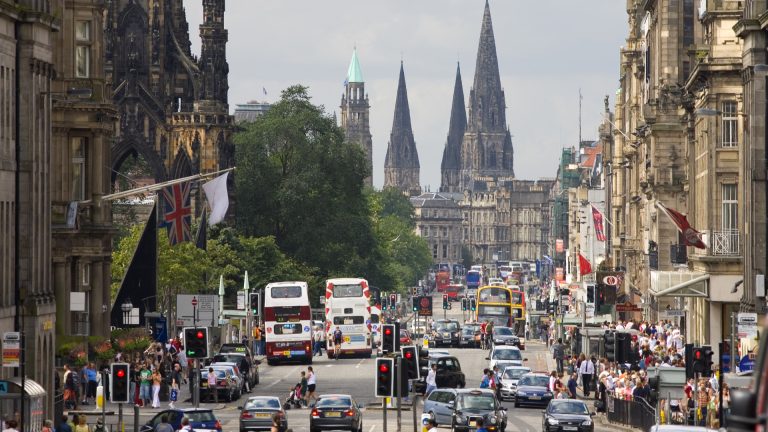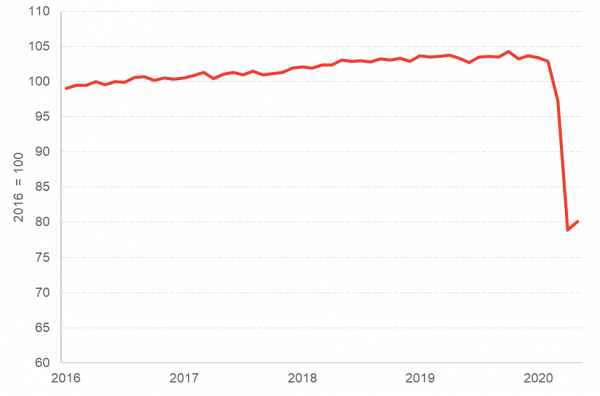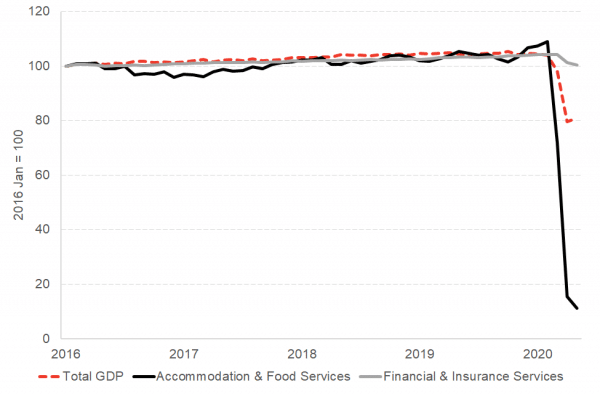Today we had new Scottish GDP data for the month of May released. [It’s the Glasgow Fair today(!), so we’ll keep this update short.]
Unsurprisingly, the figures show that the economy remained in a high state of lockdown that month.
Figure 1: Headline Scottish GDP to May 2020
Source: Scottish Government
We can also looking at the change in GDP on a rolling three month basis (Figure 2).
Figure 2: Monthly change in headline Scottish GDP to May 2020
Source: Scottish Government
Some sectors started to tentatively re-emerge from a temporary shutdown, most notably in some areas of manufacturing and construction. But for many parts of the economy, activity changed very little or in some cases fell further.
Figure 3: Headline Scottish GDP to May 2020 and for selected sectors
Source: Scottish Government
Our latest nowcasts, predict that the Scottish economy will have contracted by around 19.2% during the second quarter of 2020.
So even with this today’s new data, overall, activity remains a fraction of what it was prior to the start of the crisis. And backs-up the insights from some of the more real-time indicators that we’re seeing just now.
It is great that the Scottish Government have moved swiftly to establish this new data series, and as we continue through the recovery it will be a useful indicator to monitor.
Of course, these figures tell us only a little about what happens next or the long-term fallout from the recession. Many businesses will start back up again in the coming weeks, but what will be key is: at what capacity to they restart relative to the pre-lockdown period.
Indeed, it is only when the economy starts to emerge from the lockdown that the full long-term impacts of the crisis will be realised. So, whilst official data like GDP may ‘start to recover’, the economic crisis we face is only just beginning and the recovery for many businesses and individuals is a long way off.
Yesterday’s jobs data to May shows the scale of the challenge – it will take less than 20% of those on furlough to lose their jobs for the unemployment rate to more than double – and that is before factoring in what might happen to those who are self-employed and currently receiving government support.
With vacancies in short supply, it will take some time for people to get back in to work, and we know that for workers even relatively short periods of unemployment can have very persistent effects on their future, particularly so for the young.
In the coming months, GDP is likely to rise sharply as businesses re-start. But job losses are also likely to rise sharply too. It’ll only be after 12 months or so before we get a clear picture of the scale of the recession and the potential implications for the Scottish economy over the long-term.
Authors
Head of Research at the Fraser of Allander Institute

Graeme Roy
Dean of External Engagement in the College of Social Sciences at Glasgow University and previously director of the Fraser of Allander Institute.




